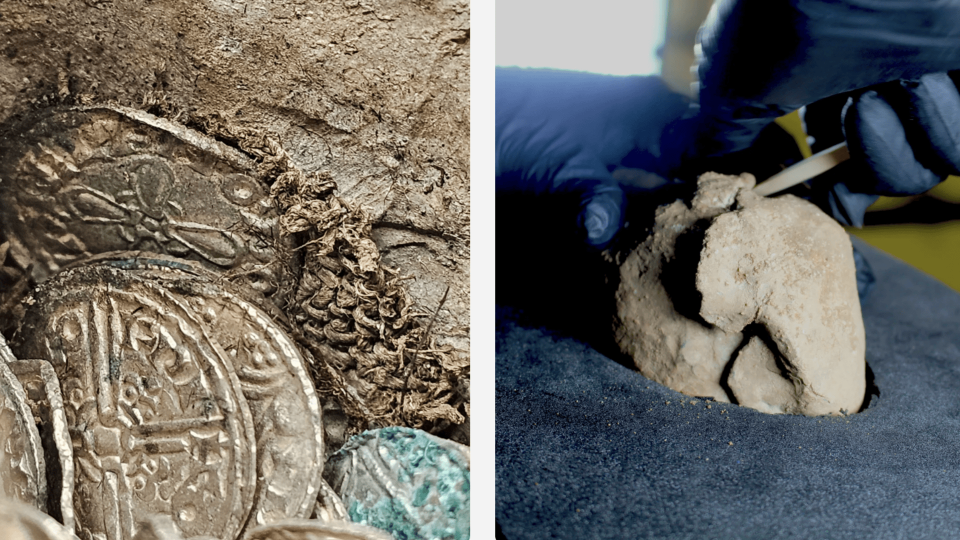A treasure trove of 11th-century coins has emerged from the Suffolk soil, offering archaeologists “a rare and fascinating” look into Suffolk’s rich history and political landscape.
Oxford Cotswold Archaeology was carrying out excavations at Sizewell C, the site of a future nuclear power plant on the Suffolk coast when archaeologist Andrew Pegg discovered a collection of silver coins.
The archaeology team unearthed an impressive hoard of 321 coins in mint condition. Dating back to a time of political upheaval and instability, the coins offer clues as to why they were stashed away.
Advertisement
Advertisement
This rare assemblage provides stunning information about the monetary system and political landscape of the time, acting like a snapshot of the past.
A small 11th-century fortune
The “historically significant” coins were discovered at the intersection of two early medieval field boundary ditches. According to Oxford Cotswold Archaeology, they appear to have been deliberately hidden.
Unearthed within a small lead bundle, the coins were found in a remarkably well-preserved state. The coins were likely placed in a purse or similar object and then further protected by a lead sheeting wrapping.
Since the coins date back to 1036-1044, archaeologists believe the owner buried them for safekeeping after Edward the Confessor’s coronation in 1042 due to political instability.
Advertisement
Advertisement
Oxford Cotswold Archaeology explains that the amount, while impressive, does not represent an upper-class fortune. Rather, it seems to be the life savings of someone with moderate wealth, perhaps a wealthy farmer with local status.
It was known that Edward the Confessor could confiscate property. This may have caused widespread fear, prompting the owner to hide their savings. Evidently, they never recovered their wealth, for reasons unknown to archaeologists.
319 pennies bought a herd of cattle in the 11th century
With a contemporary value of 320 pence (319 full pennies and two cut halfpence), the sum might seem insignificant today. However, in the 11th century, this amount was substantial enough to purchase a small herd of cattle.
The hoard contains coins from 30 different mints, including London, Thetford, Norwich, and Ipswich. Some represent a broader reach across eastern England, with northern mints from Lincoln and Stamford, and a few from as far as Axbridge in Somerset.
Advertisement
Advertisement
More in World
The coin designs reflect a time when coins were frequently reissued to prevent forgery, with changes every few years. The hoard contains four sets of iconography: the “Jewel Cross” and “Fleur-de-Lys” coinages of Harold I, and the “Arm-and-Sceptre” and “PACX” types minted at the beginning of Edward the Confessor’s reign.
A time capsule
Archaeologists aptly described the coins as a time capsule. They offer a unique perspective on British history. The “tails” side of each coin bears the name of the moneyer who made it, ensuring traceability, explained Oxford Cotswold Archaeology.
While the reason for the hoard’s concealment may remain a mystery, the coins provide a “rare and fascinating” window into this period of history, “deepening” archaeologists’ understanding of Suffolk’s rich history, Andrew Pegg concludes to BBC.
“This project provides a rare and fascinating glimpse into Suffolk’s rich history, deepening our understanding of this part of Britain.”
EMEA Tribune is not involved in this news article, it is taken from our partners and or from the News Agencies. Copyright and Credit go to the News Agencies, email news@emeatribune.com Follow our WhatsApp verified Channel



